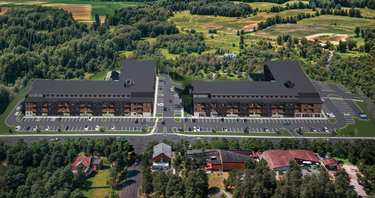IDA wrestles with defining workforce housing
GUILDERLAND — The Guilderland Industrial Development Agency has begun work on defining workforce housing in town.
“Let’s clarify what this is and what this isn’t,” Chief Executive Officer Donald Csaposs said, opening a conversation on the topic during the IDA’s March meeting. “We’re not here to pass any policy revisions ... We’re here to have a very preliminary discussion of what workforce housing in Guilderland might look like as it relates to the provision of financial assistance by the IDA.”
Csaposs noted the IDA’s role in the process would be financial, largely in the form of tax incentives. Decisions on whether a project gets built, how big it is, or what it looks like are issues for Guilderland’s town, planning, and zoning boards.
Workforce housing doesn’t have a hard and fast definition like affordable housing, which is defined by the federal government as “housing on which the occupant is paying no more than 30 percent of gross income for housing costs, including utilities,” according to the Department of Housing and Urban Development.
Currently, there is one project — Foundry Square — before the town that is offering workforce rather than affordable housing.
At a January town board hearing on Foundry Square, volunteer firefighters and their leaders spoke out in favor of the project. “It’s hard to find an apartment you can afford,” said Eric Wells, who had told the town board earlier that Guilderland departments were having trouble recruiting members because of it.
Christopher Canada, the IDA’s attorney, laid out the legal landscape in a memo he prepared for Csaposs and the IDA, explaining that state law governing IDAs doesn’t explicitly name housing as an eligible project type for financial aid. IDAs were primarily set up to boost business, create jobs, and prevent economic stagnation by supporting things like factories, commercial buildings, and research labs.
But a path to project incentives does exist, in the form of a 1985 opinion from the state’s comptroller that suggested multi-family housing could be considered a “commercial project” eligible for IDA help, provided it demonstrably creates jobs or prevents “economic deterioration.”
“Housing for an apartment complex could be an IDA project as long as it constitutes a commercial project,” Canada explained. “We’ve gotten comfortable as a firm, and most IDA counsel across the state have gotten comfortable with the idea that housing is a commercial project,” he said, adding that his firm, Hodgson Russ, had handled a number of such projects statewide.
But state oversight bodies, like the Authorities Budget Office, have recently stressed that IDAs need solid justification. Simply building apartments isn’t enough.
An IDA must show the project meets the legal definition, fits its mission, and follows clear agency policies — the Guilderland IDA doesn’t yet have a specific policy for offering financial breaks to general workforce housing projects.
As for who workforce housing should serve, Canada noted that practice varies across the state, with IDAs often targeting residents earning between 60 percent and 120 percent of the Area Median Income (AMI).
The issue for Guilderland, Csaposs pointed out, is: “The AMI for the town of Guilderland is currently about $107,000 per year; 120 percent of that pushes you up around $130,000.” He asked: “Do you consider an apartment that’s affordable for somebody ... making $130,000 a year to be workforce housing?”
It was then asked if Albany County’s lower AMI, around $83,000, would be a better benchmark, so those with lower incomes could be better helped.
But even the lower end of the typical workforce housing range raised eyebrows, as one board noted that 60 percent of Guilderland’s $107,000 AMI equals $64,200 and, using the common standard that housing shouldn’t exceed 30 percent of income, that translates to about $1,600 per month in rent — a figure potentially still too high for many essential workers.
The board took no action, deciding instead to digest the information and Canada’s memo. The board tasked Canada with finding answers on the flexibility of defining area for AMI and whether the town’s land-use boards have authority to mandate affordability requirements.



